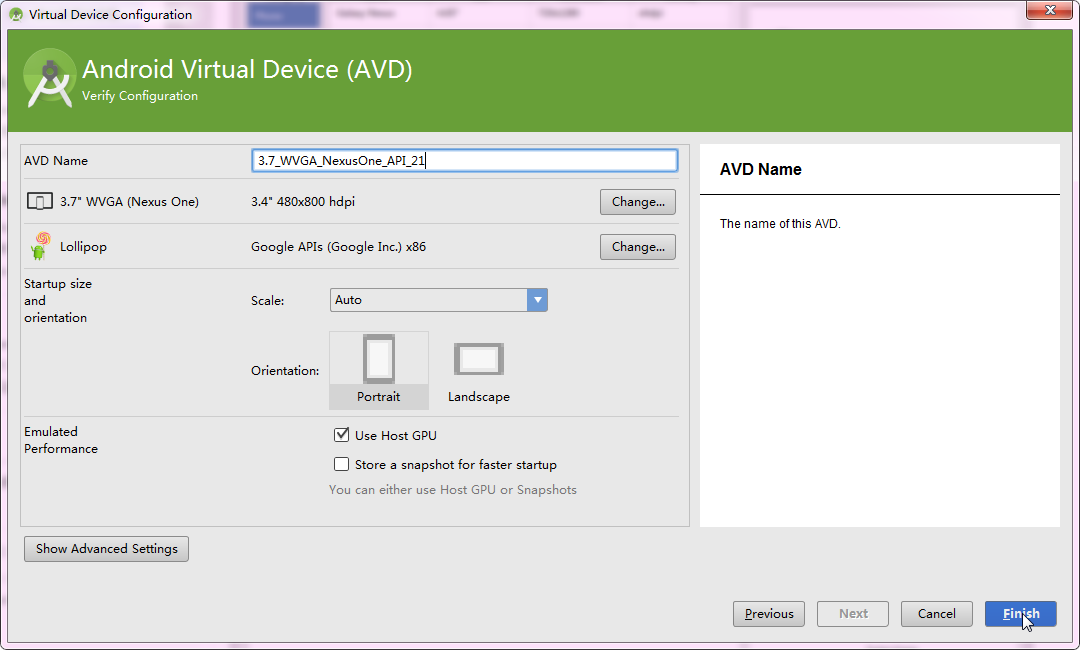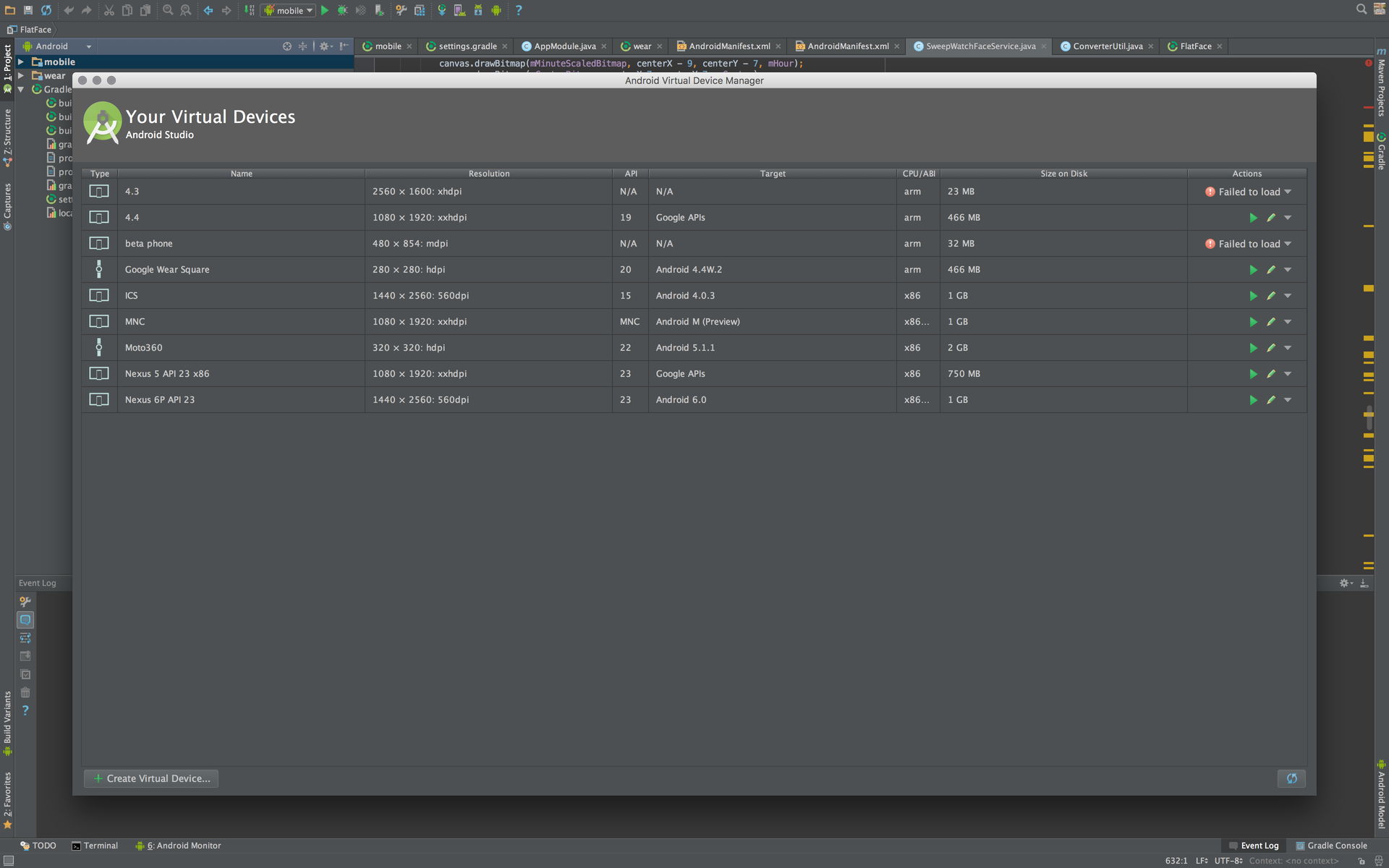

Click on OK to proceed with the save changes.Ĥ. Note: You can play around with different configurations for your virtual device.ģ. In this test I choose a very generic name Android to keep it simple. For example NexusSix-4.4 refers to an AVD that simulate Nexus-SIx which runs on Android 4.4.2 version. In case you are simulating a specific device, you might want to name it as such. A pop up will open, follow the below screenshot for the values. Click on Create button to create a new AVDĢ. The AVD Manager main screen shows one default virtual device, which is Nexus 5.ġ.

You can define things like the device RAM, whether there is touch screen and/or keyboard, camera support, audio playback support, etc. Before you can actually run an emulator, you need to install the Android SDK on your machine and define an AVD, which defines the hardware characteristics of the emulator. What is AVD Manager?ĪVD Manager is a tool to create and manage Android Virtual Devices(AVDs), which define device configuration for the Android Emulator.

The device screen initially displays ‘ANDROID‘, and then displays the graphical logo, while the Android platform associated with the AVD is initializing. The emulator window consists of a device screen on the left and phone controls/keyboard on the right.

As a developer or a tester, you can configure the emulator to closely resemble the devices on which you plan to deploy your application. Mobile emulators are free and provided as a part of SDK with each new OS release. It is generally provided by the device manufacturer. An Emulator is an application that emulates real mobile device software, hardware, and operating systems, allowing us to test and debug our application.


 0 kommentar(er)
0 kommentar(er)
